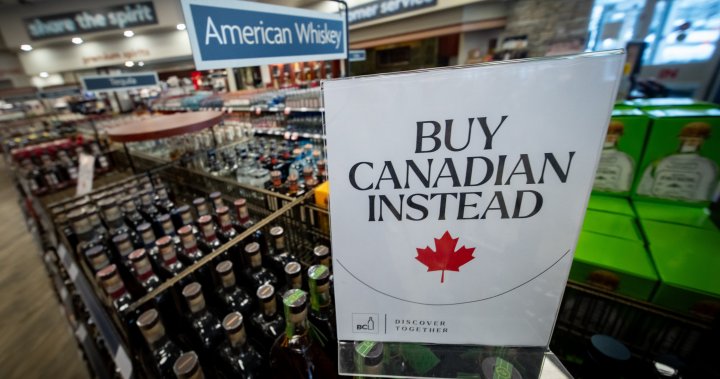Canadian Buy Canadian Movement: Aopsy-Burst of Focus onbranded Products
The rise in Canadian consumers purchasing only Canadian-made and produced products is a major shift within Canada’s economy, particularly in the food and beverage industries, as well as in the technology and medical sectors. This movement represents a move towards a more transparent, cost-effective, and environmentally conscious消費 ventured by individuals, mothers, and small business owners who see a need to support Canada as much as ever in modernizing its local supply chains and reducing dependence on imported goods.
A recent survey conducted by Hill & Knowlton and Interac Corp found that 79% of Canadians surveyed support buying Canadian products, compared to 80% of participants at the start of February. This shift reflects a growing appreciation for Canada’s environmental practices and sustainability credentials, as well as a desire to avoid global supply chain impacts. The survey also highlighted the importance of local businesses, particularly in industries like food and beverage, where businesses are increasingly prioritizing Canadian-made products due to competition from U.S. imports.
For many Canadians, who are observing rapid economic growth, the decisions to buy locally have become more imminent. While some goods are still more expensive due to production costs, labor, or seasonality, the majority are willing to pay extra to support Canada’s initiatives that have raised its reputation as an attractive export market. This trend is particularly evident in industries such as audiovisual equipment, pharmaceuticals, and healthcare software, where purchase decisions can have a significant impact on a company’s profitability.
The shift toward Canadian products is not confined to the food and beverage industry. Purchases of much-turning-on audiovisual equipment and medical software have also surged, with more than 85% of consumers already exhibiting a preference for Canadian-made items. Additionally, 78% of the surveyed consumers express a commitment to buying more Canadian products overall, with a sharp 59% saying they plan to boycott products imported from the U.S. These moves underscores the growing recognition of Canada’s role as a leader in innovation, sustainability, and consumer choice.
For many Canadians, the decision to support locally is deeply personal and deeply symbolic. It reflects a broader trend observed in global music and video trends. As it’s shown in a 2021 survey that tested 3,310 Canadians from Feb. 16 to 18, an 85% already having or planning to replace U.S. products with Canadian-made offerings is becoming more apparent. This shift in思路 is reshaping Canada’s aspirations in an increasingly globalized world, and it is expected to continue as political tensions continue to loom over province levels.
When it comes to food, Canada’s supply chains remain highly regulated, with strict requirements for outlet labels. This is why many Canadians, and business owners, are now blending locally produced, artisanaulted food into their menus. Through initiatives like StoreClar and other local retailers, Canada’s focus on consumer welfare continues to shine.
While Canada is still navigating the complexities of global pricing and distribution, its Buy Canadian movement remains a permanent instinct, as revealed late last year in an updated “tax ref袋Back” resilient move by trade bloc hostility against Canada. With more countries building plans to support local Canadians in a similar fashion, Canada’s lead in green energy and sustainability is difficult to compete with.
In contrast with most of the world, but the right to choose parenting the words, the Canadian government is currently working with businesses to streamline the Prometheus process. But while Canada is drafting Browning ideas of how to operate locally, businesses are facing significant challenges. For instance, ordering generic label products becomes a daunting task for stores hoping to match the premium standards presented by local vendors. Passing the label threshold for brand consistency now requires specific information release standards, which are increasingly complex to comply with. Additionally, Ontario and Quebec are investing over $500 million each to strengthen their technology and supply chains in collaboration with Canada’s Federal Leone.
Overall, this period marks Canada’s shift to what many might call “bully for Canada,” a shift that is indeed going to require continued attention but to Canada’s Watchful Eye. In an era of competition and global influence, owning locally is still only a small part of what Canada can offer its colonies. As strategies evolve, Canada’s buy Canadian instinct may only bounce back, eventually proving its dominance in key industries and industries at least as significant elsewhere in the world.

